Stars of September – asters, zauschneria, valley pines
September 7, 2022
A clear yellow leaf shows like a portal through the green, heavy-laden branches of the fig. It’s going to be good year for figs, plump ripening with the season’s change, with the waning sun.
Black beauty lilies are done blooming, giving way to the pink wonder of Amaryllis belladonna, she of the naked stalk, the naked lady lily, sprouting thickly from dry ground, from brown debris of summer’s drought, from duff and dust. The shear clarity of her petals infuses my dreams.
On the sunny side of the butte, all is blonde, or toasted olive, road dust and powdery mildew coated, but for the Madia elagans, showy tarweed, reaching head high with coreopsis-like disks of yellow speckled maroon, alive with flocks of goldfinches breakfasting on the abundant seeds. This native annual has spread this year, sewed by beak and wing.
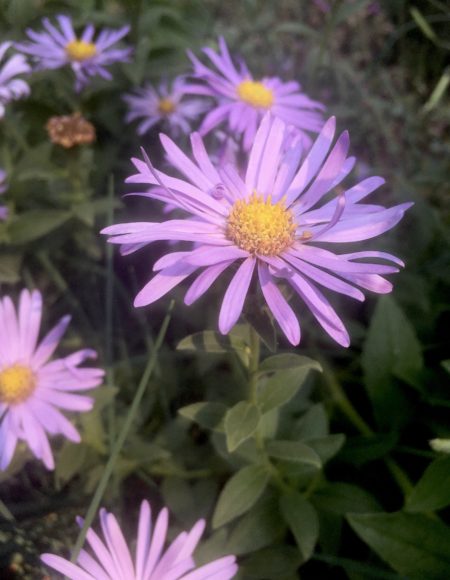
The gardens show signs of aster’s first purpled stars, of harvest heavy fruits, of the coming dormancy of fall. It’s starting: yellow leaf, haggard osoberry, dust in my nostrils, heat-accustomed skin, the back-to-school frenzy, darkening evenings, thirst for rain.
“And every day a new step towards winter, an increased frugality, a withering.” Alice Munro
September begins. Summer is mostly behind us. Who is the plant that sings this month’s name the sweetest? It must be asters, those essential meadow makers combining blues, purples, even raspberry pinks with the tawny stems of grass.
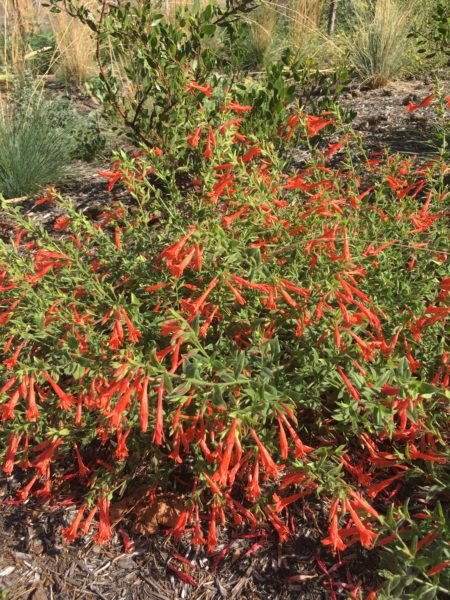
Or is it Zauschneria? Say it aloud before we lose such a name to the re-ordering of taxonomists who now insist the genus to be properly called Epilobium. Zauschneria, a new name for September one friend suggests as a gesture of preservation. You may know it as California fuchsia. Or perhaps you know it not at all. She’s sadly hard to find in nurseries. Scoop it up whenever you see one and plant it in your hellstrip, your hottest, your driest, unirrigated bed and let its trumpets call to hummingbirds, to buzz-pollinating bumblebees, to flower fanatics who marvel at such rich colors in September. Mats and mounds of silvered leaves smothered with orange or red evoke joy when planted with fescues, kinnickinnik, manzanitas, and ceanothus. I’m going to look for some today. The verge garden could use such a treasure mixed with its sedums and flowering quince.
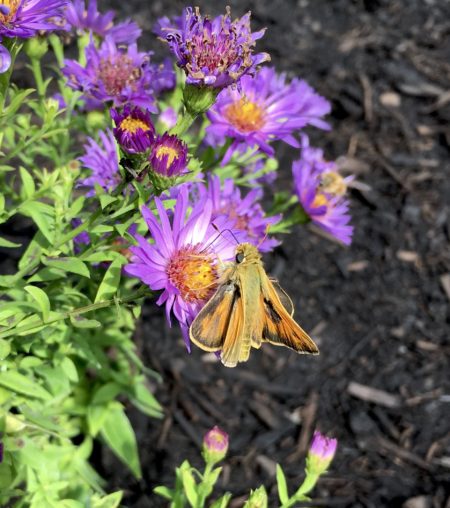
But back to asters, those more familiar friends of the month. Did you know that these too, have undergone an unfortunate name change at the hands of orderly and precise taxonomists? Now we have to stumble over Symphyotrichum when we mingle with fellow plant nerds, nursery folks, and propagators. What a shame. Aster is a lovely enough name to bestow upon a daughter.
Most of this autumn blooming clan tend toward the tall to towering, all that leafy accumulation of the long growing season powering a pollen-loaded abundance for nesting bees. Raydon’s Favorite aromatic aster (Symphyotrichum oblongifolium ‘Raydon’s Favorite’) stands three to four feet companionably with black and blue salvia and Canada goldenrod in Julie’s young garden. ‘Lady in Black’ aster (Symphyotrichum laterifolius ‘Lady in Black’) fits the moon garden theme with small dark leaves studded with pale stars cascading around the stone bench at Ami’s. Our native Douglas Aster (Symphyotrichum subspicatum) is a wild one alive with such pollinator frenzy that it ranked the highest in both abundance and diversity of bees in a recent OSU trial. Plant it to retain a slope. Let it romp widely. Let it mingle with equally vigorous Canada goldenrod for the classic purple and yellow that so enamored Robin Wall Kimmerer as a budding botanist.
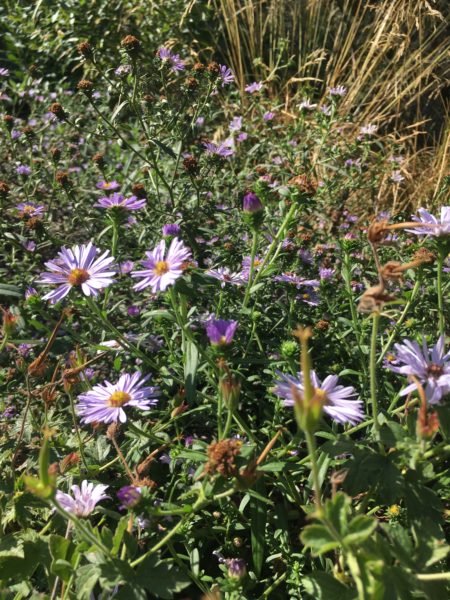
Shorter aster varieties can be had too, and might be easier to integrate into your smaller garden scene. ‘Purple Dome’ (Symphyotrichum novae-angliae ‘Purple Dome’) has long been a favorite of mine, growing to match it’s name, neatly domed and low, except for the mislabeled confusion in a few nurseries where Purple Dome shoots tall and very un-dome-like. I’m sure that version is a nice plant too, but I tend to avoid it. The Wood asters are short and sweet. Easy to find and available in whichever color suits you, look for ‘Wood’s Pink’, ‘Wood’s Blue’, or ‘Wood’s Purple’.
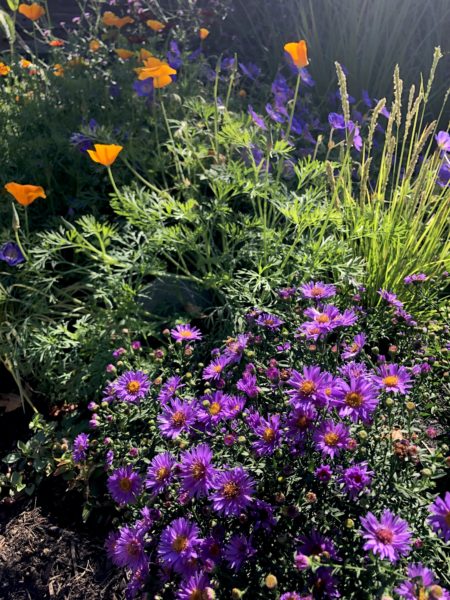
Driving north through the valley to the first cross-country meet of the season, dust devils swirl topsoil skyward across plowed fields. Sheep lunge into a freshly filled water trough. The dryness of the season was a surprise to our Virginia visitors. “I thought Oregon was known for its rain.” Soon, my friends. We cast our noses to the wind like dogs seeking a scent of welcome wet. We dance for it to come after the drought of summer. Scanning the view out the windshield, Willamette Valley pines (Pines ponderosa var. benthamiana) shine glossy amidst the dirty blonde fields and tired maples. Their pom pom clusters are fresh still, earning them my parting recommendation as a worthy plant for your September garden.
